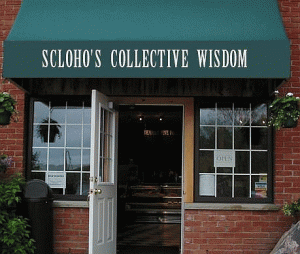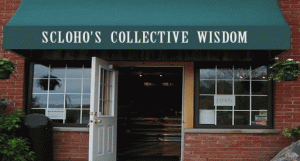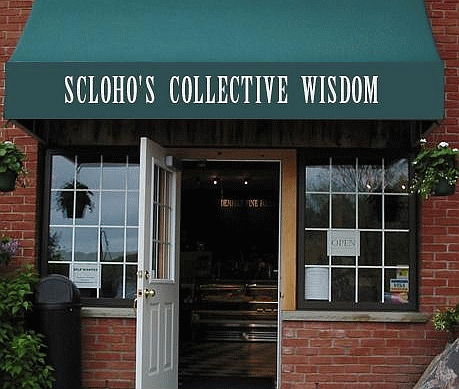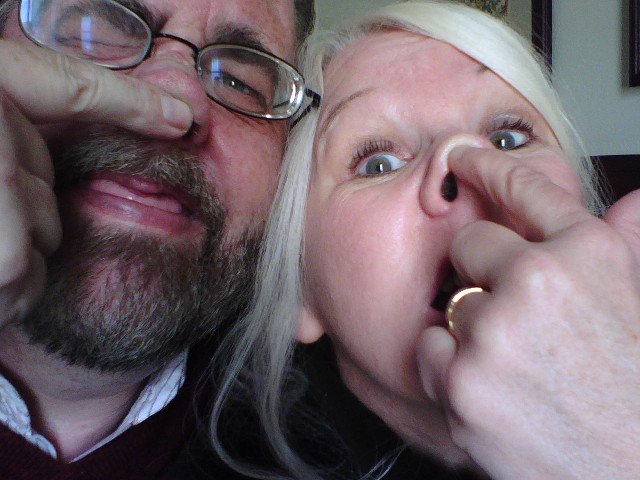by Scott Howard | Oct 21, 2015 | Marketing and Advertising Insights, ScLoHo's Collective Wisdom, WOWO Fort Wayne Radio Advertising with Scott Howard
I see so many businesses that are missing out on making money.
Lots and lots of money. What are they doing? 
Ignoring the Baby Boomers and not inviting them to spend their money with them. But don’t take my word for it. Read this from Mediapost:
Boomers Control $14 Trillion, Essential To Growing A Business
Baby boomers are the only demographic that has gotten wealthier over the last 10 years, while Gen Xers and Millennials have seen their net worth decline or in some cases disappear, often buried under a pile of student loans. Marketers devote a lot of energy to Gen X and Millennials, but baby boomers and senior citizens represent an untapped opportunity. Recent census data indicates that people aged 55+ represent 26% of the U.S. population and a whopping 66% of the country’s net worth, or $14 trillion.
Even the meaning of “senior citizen” has changed dramatically as life expectancy continues to grow, and rock stars like Mick Jagger (72), Bob Dylan (74) and Bruce Springsteen (66) continue to write songs and hit the road. Today’s boomers and seniors are no longer constrained by the social norms they helped upend in the 1960s and 1970s. They act like young adults, taking part in education, sports and leisure, entrepreneurship, non-profits, and they bring maturity and experience to the marketplace to boot.
The implications are huge for marketers in the U.S. and Europe:
1. The 55+ population has by far the most financial power and it’s essential to count them in. Younger generations may be trendsetters, but they do not have anywhere near their parents’ resources and financial freedom. To substantially grow their business, brands must target both the trendsetters and the mass market, which means people over 55.
2. Market research should be targeted at boomers and seniors, rather than merely on the young or middle-aged. Buying behaviors and expectations have changed significantly in the past decade, particularly among 55+ consumers. It is critical to get past stereotypes and clichés to understand precisely how they have changed so that marketers don’t miss prime opportunities.
3. Boomers and seniors can be excellent partners in market research because they are demanding and focus on essentials. Marketing gimmicks or fashion statements are not sufficient to get their buy-in. Boomers and seniors challenge companies to rethink products and services in radical ways, because they demand real vs. cosmetic innovation. These populations might appear more conservative when they are simply more discerning.
The takeaway: Baby boomers are not fading into the sunset, and they’re bored by an endless stream of ads for Viagra, Florida condominiums and Caribbean cruise ships. Market research that is inspired will focus on this powerful force in the economy for the next decade and beyond. Or as long as the Boss keeps rocking, and the Stones keep rolling.
At WOWO Radio, we have the largest radio audience filled with Baby Boomers in Fort Wayne. Contact me and let’s talk about how to invite them to spend their money with you.
by Scott Howard | Sep 25, 2015 | Marketing and Advertising Insights
Recently I have been talking to business that are waking up to the fact that the Baby Boomers are still a good group of folks to invite to spend money with them. My radio station has a significant chunk of them. Taking a glance at the most recent radio listener survey WOWO has over 40,000 Baby Boomer listeners every week. That’s nearly double the number of any other radio station in Fort Wayne.
Here’s a few business categories that should contact me:
The following report is from Mediapost:
Revealed – 6 Ways Boomers Are Impacting The Consumer Landscape
Thanks to Boomers, the fastest-growing segment of the population over the next 10 years will continue to be people age 50+. Indeed, the over-50 population will grow by 15.1 million, or nearly three times faster than people age 18-49, a segment that will grow by just 6.3 million. That disproportionate growth will affect nearly every industry. It will grow the consumer base of endemic sectors that already serve older consumers (e.g., health and finance), and it will age the consumer base of mainstream sectors. At the same time, Boomers’ consumer needs will change dramatically due to meaningful life stage transitions, and these changing needs will transform key business sectors.
Just how far-reaching will the impact be? To get a sense of the transformative effects of Boomer aging, take a look at its impact on these six key business sectors:
1. Financial Services
Every day for the last five years, 10,000 Boomers reached retirement age. Many began rolling over or collecting lump sums from their 401(k) and pension plans, creating an increased demand for financial products and services from money managers. That trend will continue over the next 14 years, with increasingly savvy consumers who learned from the recession to take a more proactive role in the managing their money. As Boomers continue to reinvent retirement, companies will succeed most by monitoring their changing needs and providing customized solutions.
2. Employment/Business Services
After retiring from full-time jobs, many Boomers continue to seek new work opportunities. The good news for Boomers is that they have significant opportunity. According to a 2014 CareerBuilder survey, 57% of private sector employers planned to hire seniors in 2015. This is creating a greater need for job placement and training services for older workers. Other retiring Boomers will start their own businesses, creating an increased need for business-related products and services.
3. Wellness & Fitness
The wellness/fitness industry has a huge growth opportunity when it comes to marketing to Boomers. A couple of years ago, the JAMA Internal Medicine issued a wake-up call when it reported that Boomers aren’t as healthy as their parents’ generation, specifically in suffering from chronic conditions that may have been prevented with better lifestyle choices. Recent research suggests they are headed in the right direction. Seven in ten currently manage their diets, and they cite a desire to improve their health as a top reason for doing so. Additionally, six in ten exercise multiple times a week. Boomers are increasingly using wearable fitness devices and health apps to monitor and improve their health. As a result, they are creating a demand for wellness and prevention products and services that will only grow as they age.
4. Brain Games
According to the Alzheimer’s Association, every 67 seconds someone is diagnosed with Alzheimer’s disease, and one in every three seniors dies from dementia. Boomers are indeed worried, and the brain fitness market has grown dramatically due to Boomer investment in games and services that aim to improve mental dexterity and brain fitness. With the most online-savvy Boomers marching toward their 60s, expect to see an even greater investment by companies providing online games and tools that help Boomers maintain mental dexterity longer.
5. Travel
Boomers love to travel, and retirement will give them greater flexibility to hit the road, providing growth opportunities for many in the travel industry. Indeed, the market of retirement travelers will grow by 36% over the next ten years, which will mean 8 million more retired domestic travelers and nearly 4 million more retired foreign travelers. Retired travelers spend 12% more than employed travelers on domestic vacations and 23% more on foreign vacations.
A broad range of travel marketers stand to gain, in particular, those providing luxury services, as well as cruise lines. In recent years, cruise lines have focused on building their younger consumer base, but the real growth opportunity lies in retired travelers, who are 60% more likely than employed travelers to be repeat cruisers.
6. Health Management
Boomers in their 50s and 60s, and, soon, their 70s, will increasingly need assistance managing a variety of health ailments related to aging — including high blood pressure, dry eyes, high cholesterol, hearing loss, arthritis, heart disease, cancer, diabetes, macular degeneration, osteoporosis, overactive bladder, prostate cancer, memory loss, and dementia.
This will create a greater demand for non-physician medical professionals (e.g., nurses, physician’s assistants) to handle the overload from doctors who run out of hours to treat patients. These services will rise in popularity as a less costly alternative Boomers will use to help control healthcare costs. Additionally, prescription drug use will continue to skyrocket. Today, Boomers fill 111 million more prescriptions a year than they did just five years ago. Expect an even bigger surge as Boomers age through their 60s, 70s and beyond.
Bottom Line
Boomers are still the largest, biggest spending generation. They are entering a phase of life where their needs will provide new and expanding opportunities across a broad range of key business sectors. Brands that keep their finger on the pulse of changing Boomer needs, and that provide products and services to meet these needs, stand to gain in a big way.
by Scott Howard | Jul 30, 2015 | Marketing and Advertising Insights, WOWO Fort Wayne Radio Advertising with Scott Howard
Time to educate the young’ins…
At least that’s what it feels like.
I recall when I was a hot shot 30 year old advertising & marketing guy in Detroit.
And now my kids are that age, but not in the same profession.
I work with and hang out with folks who are 30 years younger than me and 20 years older than me, and all is good.
However, I’ve come to realize that I really didn’t “get” my parents when they were in their 50’s and 60’s.
Now my generation of Baby Boomers is different from their generation that was born in the 1930’s. We don’t feel old or act old. We look in the mirror and don’t recognize the older person staring back at us.
The marketing millennials don’t seem to “get” us all the time either. Oh, I’m sure there are some Baby Boomers that are taking drugs for all the ailments that we are supposed to get one day, but quite honestly, not me and none of my Baby Boomer peers are either.
By the way, the radio station I work for, WOWO, in Fort Wayne has a lot of Baby Boomer listeners along with a lot of younger adults too. So with all of that in mind, I will continue to share some articles from Mediapost on occasion as a reference for all of us, no matter our age, of what the 50+ crowd is like in 2015:
by Gordon Plutsky
I was recently at a restaurant surrounded by tables of 60+ Boomers. Among them were enough iPhones to stock an Apple Store, and all were fiddling with the phones like a group of giddy millennials. It is clear that the Boomer generation is fully engrossed in web, social, and mobile media. A line has been crossed, and the stats back it up. Time to kill this myth and misperception once and for all. It was likely true five to seven years ago, but now it is over.
In contrast, every conversation I have with clients, prospective clients, and marketers is around how to reach millennials, like they are some new super-race of humans who have characteristics unlike anyone who has come before them. Yet another myth, as they have the same behaviors, hopes and dreams as people have had in their 20s and 30s for generations. My early-30s marketing director is in the same place I was at that age in terms of career/family concerns and motivations. The difference? I had the primitive web in 1995; she has the world in her iPhone that never leaves her side. Same age, same life stage behaviors.
I was born on the dividing line between the Boomer and Gen X cohorts. I also spend my days with a team of millennial digital markers and get to see this not-so-unique species up close. From my vantage point, the differences among Boomers, Gen X and Millennials are few and far between, albeit with some subtle changes in technology and social platform usage.
We are in the midst of significant transformation in terms of culture, demographics, and technology. The United States is getting more diverse and connected by the minute. The speed at which attitudes change is striking compared to the past, and it is a direct result of our digital connectedness. This year will likely be remembered as the year that same sex marriage became federal law, hot on the heels of transgender awareness going mainstream via Caitlin Jenner. The Confederate flag came down in South Carolina after a horrible tragedy that spurred an Indian-American female Republican governor to echo the calls that it was time to change. These events are amplified as more Americans access the web via smartphone than the desktop and near complete saturation of social media networks.
What does this mean for marketers? It’s time to stop worrying about your millennial strategy while ignoring Boomers. Let’s move past age-based demographics that don’t hold much weight in today’s America. Some suggestions:
1. Focus on life stages and changes. Going to college, getting a new job, buying a house, starting a family, having a sick parent, etc., are the drivers of purchasing products and services, no matter who or when they happen. With digital media becoming dominant, these life changes will send people to the web with questions and problems to solve, often first to Google, then to your website, where you need to have quality compelling content to answer the questions they may have.
2. Target consumers by common interests and communities. People don’t age out of interests like they used to, and you can find communities of like-minded people all over the web and social media. U2 just played here in Boston, and the crowd was packed full of Boomers. Reaching them through the large-print version of Reader’s Digest would not have been successful.
3. Build a network of advocates and influencers. Consumers of all types depend on peer reviews and recommendations. In this era, people are media. It has never been more important to get consumers to become online advocates and to turn them into influencers.
Old ways and myths are falling hard these days. Stay out of the pile of old magazines and newspapers, and make sure your marketing is keeping up with the rapid changes in consumer behavior.
by Scott Howard | Jul 7, 2015 | Marketing and Advertising Insights, ScLoHo's Collective Wisdom
A great article from Mediapost last week talking about my generation:
7 Things Marketers Can Learn About Boomers From ‘Grace And Frankie’
by Derek Dunham
If you’ve already binge-watched the entire first season of “Grace and Frankie,” don’t despair. The Netflix–original show has been renewed for season two.
The show’s premise: Two longtime couples divorce when the husbands confess a 20-year affair — with each other. The award-winning cast includes Jane Fonda as buttoned-up beauty exec Grace, Lily Tomlin as hippy art teacher Frankie, and Martin Sheen and Sam Waterston as their attorney exes, Robert and Sal. The characters are at the forefront of the Boomer generation. (The oldest Boomers are now 70, the same age as Fonda’s character.)
“Grace and Frankie” provides insights into the experience of growing older in an age-obsessed society. Boomers are binge-watching one of the few shows that understands the way they think, feel and act.
Here are seven things real-life Boomers have in common with the characters on “Grace and Frankie”:
1. They log on. Grace navigates the online dating world with ease. Frankie struggles with technology, yet uses her smartphone and laptop with a little help from her friends in tech support. Their real-life counterparts are frequently online, too: Boomers make 200% more online purchases than any other generation.
2. They’re not ready for a retirement home. In the episode in which Frankie gets mistaken for a potential nursing home resident, she runs for the door. Boomers are right there with her: Only one in five sees a retirement community in his or her future.
3. They get divorced. The Boomer divorce rate is higher than that of any other generation. And, dovetailing with the show’s theme, many couples are splitting later in life. Divorce rates in the over-50 demographic have doubled in the last 20 years.
4. They want to stay in the workforce. Grace is planning to return to the cosmetic firm from which she retired; Frankie’s looking for a job as an art teacher, and Robert and Sal work as lawyers. Like them, three-quarters of Boomers plan to work past traditional retirement age.
5. They have active love lives. “Grace and Frankie” characters date, fall in love and have sex. So do many of their generation. Studies have shown that the number of people who are sexually active over 50 has steadily risen since the ’70s.
6. They’re free spirits. Frankie lights up, and quite a few Boomers would approve. According to a 2015 Pew Research study, 50% of Boomers favor legalizing marijuana.
7. They feel younger than their age. Like high-energy Grace and Frankie, 79% of older adults feel younger than their actual age, yet they often experience age discrimination and feel “invisible” — an experience that Grace and Frankie have in an episode in which they are ignored by a store clerk.
“Grace and Frankie” has proven that Boomers will flock to a show that “gets them.” People of all ages are just people — and they want to be treated that way.

by Scott Howard | Mar 9, 2015 | Marketing and Advertising Insights, ScLoHo's Collective Wisdom
Last week, Mediapost shared an article about advertising to baby boomers. My wife is in this age group and I’m just barely a part of this generation.
Our parents have passed away, so it’s impossible to ask them now what they felt like when they turned 50 or 60 but it doesn’t matter.
What does matter is that you understand what we want in our advertising messages.
Don’t treat us as old folks. I stay active. I took up golf last summer. A few months ago I went bowling and beat my boss who is nearly 20 years younger than me. He beat me at golf by the way.
When I look in the mirror or see pictures of me, I sometimes forget that I have aged. I don’t feel like I am a day over 40, the age I was when I met my wife. But while I admit I have kids who are 31, 30 and nearly 29, and I like being 55, I don’t feel like I thought I would at this age.
I have noticed that I am prone to not care about the “fluff” in life. No need to hype things, it turns me off. I prefer genuine. I have also noticed that my kids are like this too. So while some think that it is perhaps a generational, baby boomer preference, I think it applies to all adults.
Read more from Mediapost:
Ever Wonder Why Baby Boomers Don’t Respond To Your Advertising?
As people age, they typically move into the higher levels of personality development and become increasingly resistant to advertising. Having seen and listened to tens of thousands of ads over their lifetimes, it isn’t likely that you are going to come up with an ad that a Baby Boomer views as startlingly original. We’ve learned doing the familiar in an unusual way, provided of course that the customer is qualified for and has a generic interest in the product for which the ad is being done, will increase the effectiveness of your ads.
Connecting with Baby Boomers in an unusual way means creating messages and images that doesn’t idealize aging or aging people by invoking images that are connected to life as a younger person. A past Duke University study found that older people were more likely than younger people to express satisfaction with their lives. Many will not read messages that talk about “reclaiming youthful vitality” as being one of the benefits of the advertised product.
Don’t include hyperbole. Talk about the product or service but do it without exaggeration. Don’t present the product as being in a superior class all by itself. Aging Baby Boomer customers generally don’t need or want to be told that an advertised product is peerless. They’ve received this pitch so many times it is no longer believable or at best, a platitude. This approach is typically perceived as hucksterism or deceptively selling fraudulent products or services.
In our last post we discuss the value of being authentic in advertising and marketing. We’d suggest your message be unusually authentic. This is not a trivial thing. Older people typically have a sixth sense about a person’s real feelings about them. To claim in an ad that the producers of the product or service really care for their customers doesn’t come across as authentic.
Another unusual way is connecting with older people’s values. The one thing that aging people usually have faith in is their values and what they believe in. So, in creating marketing messages for Baby Boomers talk about them and what they stand for. By aligning the values conveyed by your message with their values you will more likely get them to take notice of what you say and take an interest in considering the product or service you are promoting.
Finally, avoid creating messages that focus on the Baby Boomer as self-centered. Self-centeredness is more common among younger people and runs deeper. As we age we tend to think more of others and about our legacy and the ultimate meaning of our lives. Ego-centered ads tend to turn off many older customers.
In summary, when creating messages for Baby Boomers, be real in product and service claims, be authentic in message style and content, connect with their values, and don’t invoke the values of a self-centered person.
Keep in mind as you ponder the last point that for years many Baby Boomer “experts” predicted that the “Me” generation would enter old age as self-indulgent consumers. That is not proving to be true. For instance, even though many continue experiencing the toughest economic picture since the Great Depression, philanthropy has been on the rise as the population gets older. “Giving back” is a major theme in many older people’s lifestyles and aspirations.




